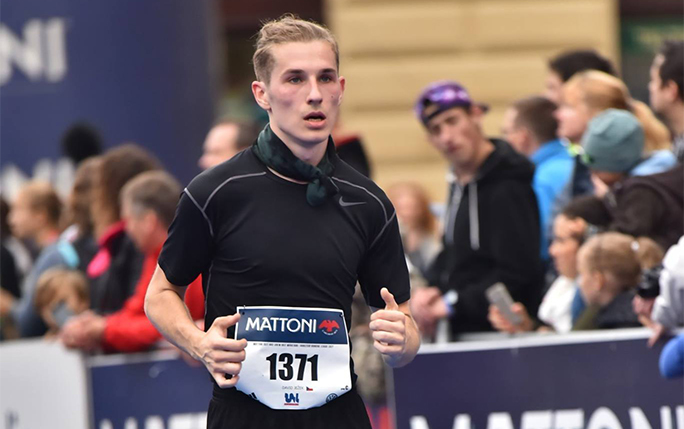CDT Student Interviews – Spotlight on Ondrej Sedlacek

In October 2020, LIV.DAT welcomed its 4th cohort of students into the Centre. Since they started their PhD’s, we have asked them a few questions as part of the CDT Spotlight Interview series. This will give you a more personal insight into work, motivation and challenges of our new students. Be sure to have a look at their personal profiles as well.
For this interview we have spoken with Ondrej Sedlacek, who will be working on Beam Induced Fluorescence monitor for high-intensity beams. His research is split between the University of Liverpool and CERN.
Why are you interested in Physics?
“I feel like physics always somehow resonated with me during my life. If I reflect on my childhood, I was quite interested in how things work, playing MS-DOS game ‘How it works’ and constantly deconstructing things, etc. Later I felt like physics and math made sense to me so I have followed it further. Now I like the mindset of trying my best to consciously trying to understand and use critical thinking while being as honest as possible.”
How did you end up in Liverpool?
“I was looking into how to continue my career path as my Master's programme was coming to its end. A colleague at CERN suggested a Ph.D. project split between Liverpool and CERN and I have found it rather intriguing, so here I am.”
Which contribution to your field do you consider to be the most significant?
“That is hard to answer however, a contribution that is the most significant to me is probably working on electron beam simulations as a part of Experimental Area section at CERN in 2019. The reason for this is that it was my largest project yet and I have learned a lot during that time, which now comes in very handy during my Ph.D.”
What do you hope to contribute to your field?
“I hope to do a good job with my Ph.D., which definitely has a great potential for a big impact. However, I would also like to contribute to my field by teaching while continuing my research. Linking teaching and research has great added value to the students, as I can see in my program, and I would like to contribute to this in the future if possible.”
Where do you hope to end up after your PhD?
“Well, according to my last answer, I would probably like a fellow position at a research centre such as CERN or Cockcroft institute and closely cooperate with a university. But that being said, working in the industry does not sound bad to me either. I tend to be a less competitive person, that is why I tend more towards the academic world. However, I would not hesitate to work in industry if the work is interesting and the working atmosphere is right. There is a 6 months industrial placement as a part of my Ph.D. programme and I'm looking very much forward to that experience.”
Why do you think Big Data is important?
“I think that Big Data is important because it has enormous potential. Focusing on science, in my opinion, logging data about experiments, understanding the results, and making predictions is the essence of science. Currently, we are living in an age where a large amount of data can be stored quite easily, which is great because it means that important parameters are probably not missed. However, at the same time, it is harder to see the patterns. Machine learning (ML) is often connected to Big Data because it is an amazing tool for gaining a lot of predictions from the large stored data. Scientists are trying to be cautious as is in their nature since ML methods often do not provide the understanding to the scientists; it just provides correct predictions. However, the accomplishments that have used ML are outstanding and a large wave of interest can be observed for some time now and that is why I think that Machine Learning and Big Data are important.”